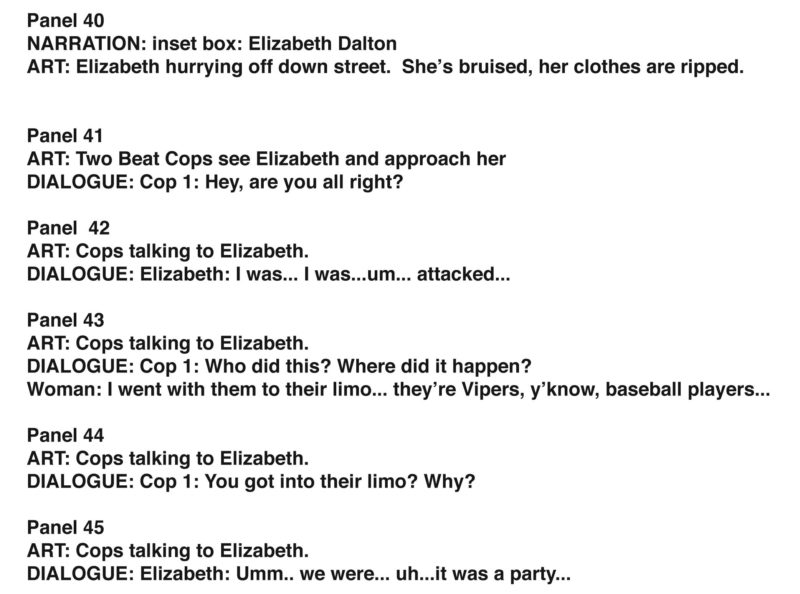Few names hold more weight in queer feminist comics than Jennifer Camper, whose indie work has been wildly influential since the 1980s. Here, she discusses “Boys Will Be Boys,” a satirical comic about toxic behavior and comeuppance, in which a retired baseball player is put on trial for thirty years of sexual violence against women.
—Kristen Radtke
THE BELIEVER: How did this comic start?
JENNIFER CAMPER: I developed the idea for this comic in June 2017 after the Bill Cosby sexual assault trial ended in a hung jury. I wanted to tell the story of a man who has spent a privileged lifetime believing that his sexual behavior is fun, deserved, and sanctioned by society, and then is indignant to be accused later of improper behavior and criminal sexual assault. My working title was “Rape and Time”. I began to write the comic in late September 2017, and in October the story broke about Harvey Weinstein’s sexual misconduct. In the months I spent drawing and inking the comic, a parade of powerful men were accused of sexual assault.
BLVR: What’s your process like?
JC: For long comics I write an outline, but for shorter comics the outline is in my head. Next I write a script, broken down by panels, with narration, dialogue, and a description of the art for each panel. Then I sketch page layouts, figuring out the size and number of panels on each page. I want each page to finish with a scene ending or with a cliffhanger, so I may go back and rewrite the script to correct the narrative flow. I draw larger than the finished art, using a lot of visual references. My pencils have three or four panels per page, and are hand lettered. I use a light box to trace the penciled art with ink onto bristol. I ink with brush and use pens for thin lines and lettering. Finally I scan the art and obsessively tweak it in Photoshop, making corrections and adding solid blacks or color.

You have reached your article limit
Sign up for a digital subscription and continue reading all new issues, plus our entire archives, for just $1.50/month.
Already a subscriber? Sign in





